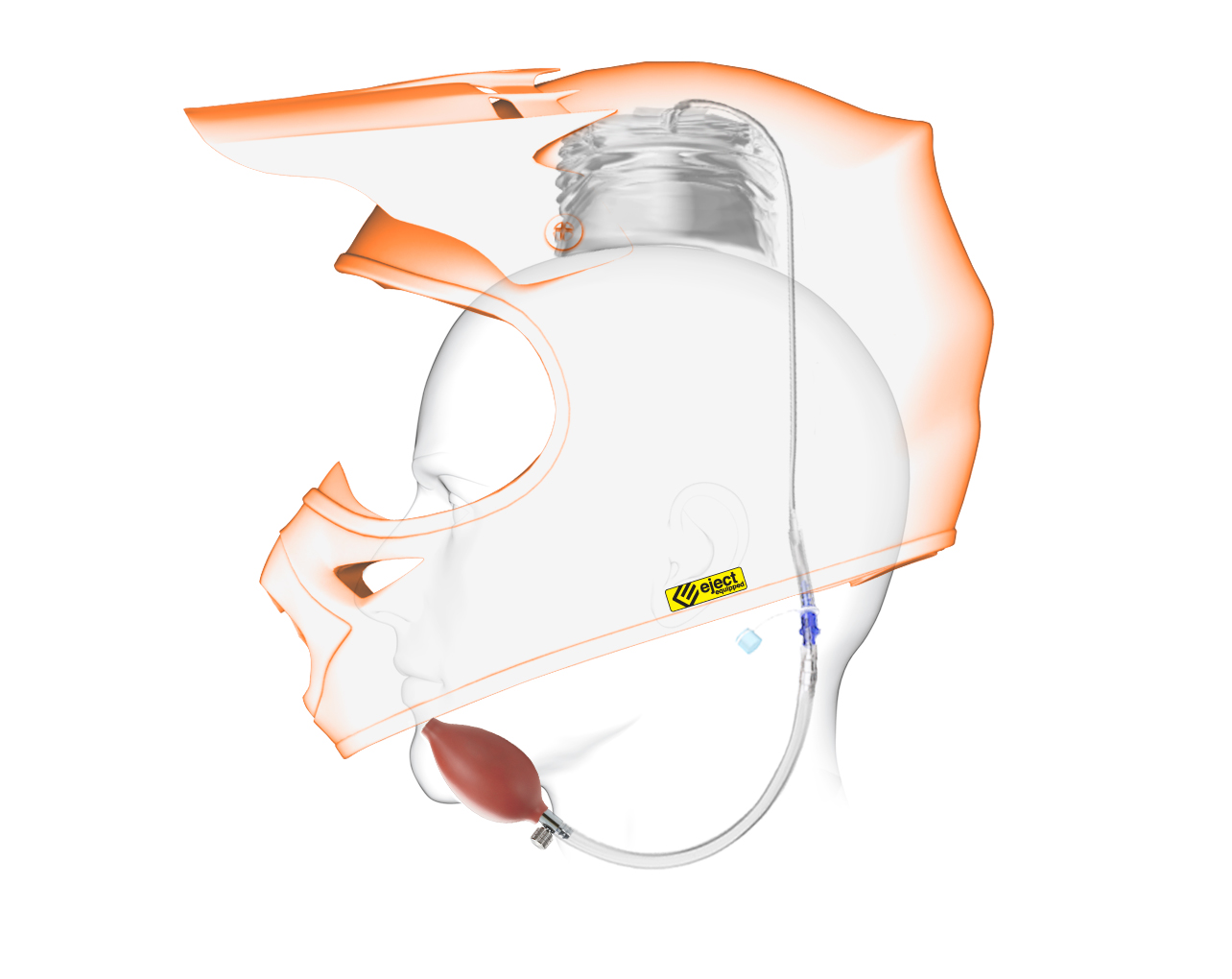DRIVERS COMMITTEE WANTED EJECT SYSTEM MANDATORY
Thu, 2009-12-03 15:00
 NHRA drivers wanted the Eject Helmet Removal System [Eject] and after a period of research, the sanctioning body agreed the device designed for safer helmet removal in the event of a crash was a good idea. Effective 2010, all NHRA drivers in the professional and alcohol ranks will be required to equip their helmets with the Eject system.
NHRA drivers wanted the Eject Helmet Removal System [Eject] and after a period of research, the sanctioning body agreed the device designed for safer helmet removal in the event of a crash was a good idea. Effective 2010, all NHRA drivers in the professional and alcohol ranks will be required to equip their helmets with the Eject system.Bob Vandergriff Jr., Chairman for the newly formed NHRA Driver’s Committee, confirmed that his group pushed for the mandatory implementation of the Eject system.
“You have to credit Larry Dixon because he’s the one responsible for bringing it to our attention on the Driver’s Committee,” said Vandergriff. “He brought it to us as another option to increase the safety aspect of what we do.

NHRA drivers wanted the Eject Helmet Removal System [Eject] and after a period of research, the sanctioning body agreed the device designed for safer helmet removal in the event of a crash was a good idea. Effective 2010, all NHRA drivers in the professional and alcohol ranks will be required to equip their helmets with the Eject system.

Bob Vandergriff Jr. says the Eject System is just one more way of making drag racing safer for its participants.
“You have to credit Larry Dixon because he’s the one responsible for bringing it to our attention on the Driver’s Committee,” said Vandergriff. “He brought it to us as another option to increase the safety aspect of what we do.
Dixon had taken note of its use in Indy car applications and believed it would be a good fit for drag racing. He was one of two drivers who used the Eject system in 2009 in addition to the existing safety equipment.
So what is the Eject system?
The Eject System consists of a small plastic bladder with a short length of tubing attached, Eject is placed in the top of a driver or rider’s helmet, without compromising fit or comfort. It is inflated, using CO2 or a handheld bulb inflator, to gently push the helmet off of the head, without any pressure or traction being applied to the spine.
John Deagan invented the Eject System following a 1985 motorcycle accident. He was left with long-term spinal injuries associated with the removal of his helmet.
Vandergriff, on behalf of Dixon, pitched the idea of making the Eject system mandatory to the NHRA’s Director of Nitro Racing Dan Olson in late 2008.
According to Patrick Lynch, motorsports director for Shock Doctor, the manufacturer of the Eject System, Eject is the only product that allows medical caregivers at race tracks and elsewhere, the ability to quickly and safely remove closed faced helmets, without any pressure or traction applied to the spine. The process greatly reduces movement in the patient’s head, and assures that EMTs can immediately focus on primary medical concerns: airway, breathing and circulation (ABCs).
Drivers in the professional Indy Racing League, NASCAR, Grand-Am Road Racing, and riders in both AMA Pro Motocross and Supercross are also required to use Eject within their helmets. Eject has a roll out program underway to support the riding and EMT communities on a nationwide basis.
It is estimated that 350-400 NHRA drivers will be equipped with Eject when the 2010 season starts.
For a device that appears to be this worthwhile, why did it take so long to become mandatory?

Top Fuel driver Larry Dixon brought the idea of implementing the Eject System as a mandatory safety item to the Driver's Safety Committe. He was one of two drivers who used the device last season.
“We wanted to become educated and ensure the Safety Safari was trained on how to use it,” Vandergriff explained. “We wanted to make sure they also had the proper equipment. It wouldn’t have done us any good to have some drivers who had it and others who didn’t and then play a guessing game in an emergency.”
Vandergriff added that this device is just one of many safety-related ideas his group is looking at in the near-future.
“We have always been concerned with the reality of a driver getting hurt and how the safety crews would remove the helmet,” Vandergriff said. “These helmets aren’t the easiest things to get on or off. This system will now enable them to remove the helmets without potentially causing any further injury.”
For more information, please visit www.ejectsafety.com.
Advertisement
Categories:



































